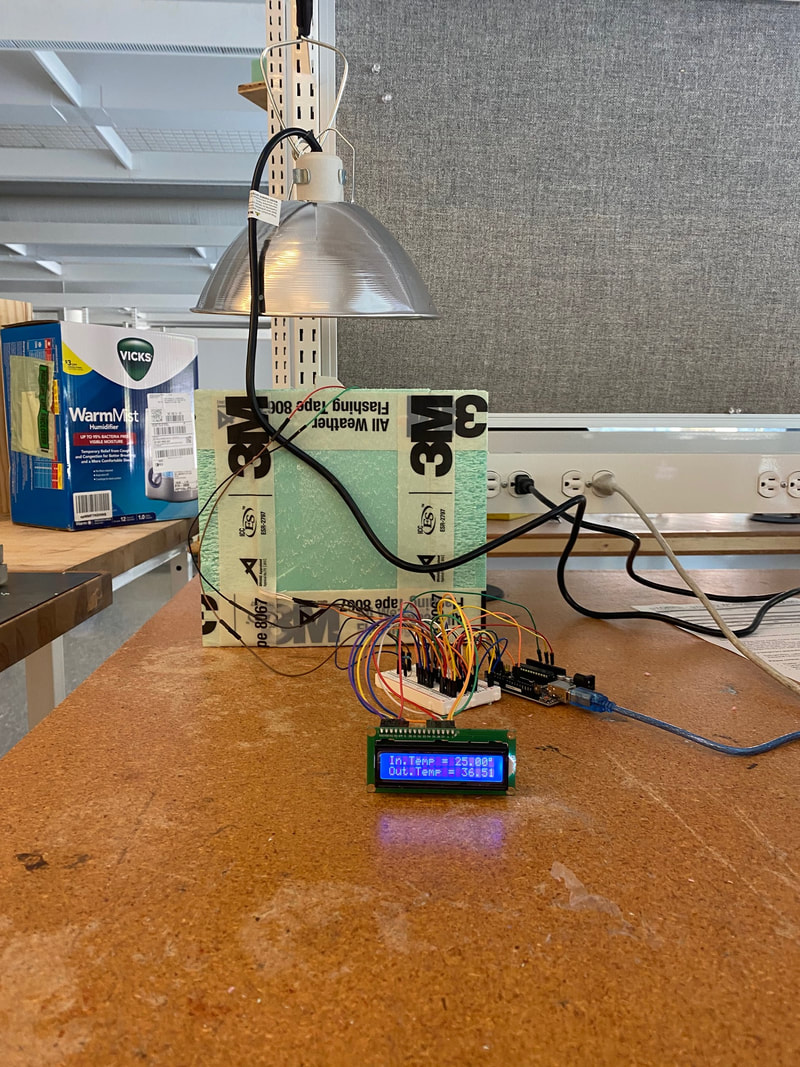Preliminary Testing
In our preliminary testing we compared the temperature data from a ceramic tile and a concrete slab in order to confirm the project would yield usable data in its current state. We confirmed how long to test (an hour), we deemed it enough to see that there was an appropriate amount of time to notice trends/gain info. From the video above you can see that the DHT11 (ambient temperature sensor) is accurate to the closest integer, while the thermistor (surface temperature) is accurate to two numbers past the decimal point. We can also see that there is a significant enough difference between materials to make the test worthwhile. All pieces of the project must begin at room temperature, in order not to affect the data.
Testing Procedure
1) Allow box and tested material to acclimate to room temperature. (you can use an infrared thermometer)
2)Place sample material in top of box to complete the seal.
2) Slide the box under the lamp that is already hot.
4)Maintain consistent timing for all samples.
5)Stop recording after allotted time, and assemble data into a spreadsheet.
2)Place sample material in top of box to complete the seal.
2) Slide the box under the lamp that is already hot.
4)Maintain consistent timing for all samples.
5)Stop recording after allotted time, and assemble data into a spreadsheet.
